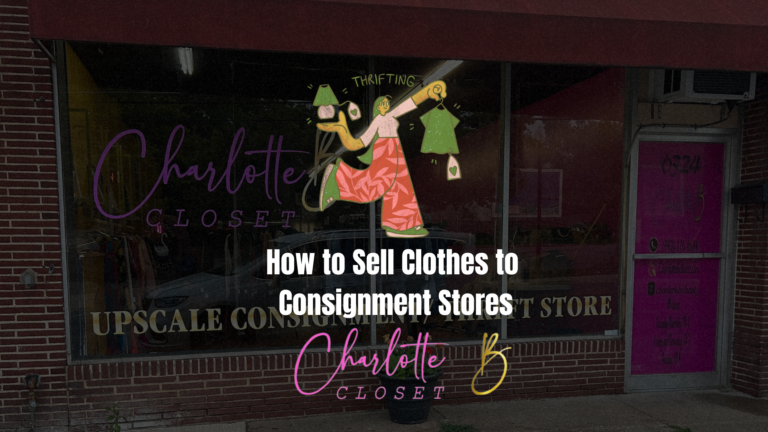4 Secrets Of Picking Valuable Art At Thrift Stores (Best Tricks)
Navigating the vast and varied world of thrift store art can be exhilarating and overwhelming.
While there’s a genuine thrill in potentially unearthing hidden treasures, the challenge lies in discerning the truly valuable from the simply decorative.
So, what are the secrets of picking valuable art at thrift stores?
To master these secrets, focus on understanding artist signatures, the historical relevance of pieces, and their overall condition. Moreover, keep your search open to more than just older artworks; pieces from the 2000s onwards can also carry significant value.
Secrets of Picking Valuable Art at Thrift Stores – Short Guide
In the realm of thrift store art shopping, the ability to discern true value from mere aesthetics is an acquired skill. Begin by searching for distinct signatures or maker’s marks that hint at authenticity. Diversify your attention; both older and contemporary pieces, even those from the early 2000s, can be surprisingly valuable. Engage with local art communities for insights and remember, the frame of a piece can sometimes hold as much value as the artwork itself. Above all, approach each potential purchase with a discerning eye, prioritizing personal resonance over fleeting trends.
What to Look for in Thrift Store Art?
When browsing thrift store collections, pay close attention to artist signatures, unique maker’s marks, and the overall condition of the piece.
Familiarize yourself with different art eras to recognize items with historical or cultural significance, and always prioritize authenticity through thorough research.
1. Signature and Maker’s Marks
When examining art pieces in a thrift store, one of the first things to inspect is the signature or any maker’s marks.
An artist’s signature is a primary way to identify and authenticate a piece of work. This mark could be at the bottom corner of a painting, the base of a sculpture, or even at the back of a framed artwork.
Additionally, a unique maker’s mark or stamp could indicate the studio or workshop where the piece originated. Recognizing these marks can be crucial in determining the authenticity and potential value of an art piece.
2. Historical and Cultural Relevance
The era and cultural context in which an art piece was created can significantly influence its value and significance.
While not every old artwork is valuable, pieces from certain periods or movements, such as the Renaissance, Impressionism, or Art Deco, can hold particular significance.
Furthermore, artworks that depict culturally important events or showcase a unique style native to a particular region can also be of great value.
It’s helpful to have some knowledge of art history to recognize pieces that might have historical or cultural importance.
3. Condition and Maintenance
The overall state of an art piece plays a pivotal role in its valuation. Look for signs of wear, such as scratches, tears, discoloration, or any evidence of past repairs.
While minor issues might be fixable, severe damage can significantly diminish the value of an artwork.
Moreover, consider how well the piece has been maintained. Even if an artwork is old, if it’s been cared for properly, it could still be in excellent condition and hold significant value.
4. Research and Authenticity
Before making a purchase, it’s essential to invest some time in researching the piece in question.
Thanks to the internet, there are numerous resources available to verify the authenticity of an artwork, from online databases to art forums.
Doing this research can save you from buying counterfeit or misattributed pieces.
Understanding the background, origins, and any previous ownership of the piece can also provide insights into its true value and significance.
Efficient Ways of Picking Valuable Art at Thrift Stores
To uncover hidden gems, diversify your search beyond just older pieces and be open to contemporary artworks.
Engage with local art communities for insights, inspect every aspect of the artwork, including its frame, and never underestimate the potential worth of seemingly mundane pieces.
1. Diversifying the Age Range
While many believe that older artworks are the most valuable, contemporary pieces, especially those from the 2000s onwards, can also hold significant worth.
Emerging artists from these eras might become the next big names in the art world.
Hence, it’s a good strategy to diversify and not limit oneself to just older pieces. Keeping an eye on newer creations can offer a fresh perspective and potentially lead to discovering a hidden gem.
2. Thoroughly Inspecting Artwork
It’s not just about examining the artwork itself but also inspecting its nuances.
For instance, a musty or moldy smell can indicate potential issues that aren’t immediately visible.
It’s crucial to use all your senses when assessing a piece. Touch the texture, smell for any off-putting odors, and even listen – sometimes, a rattle in a framed piece might indicate loose parts or damage.
3. Networking with Local Art Communities
Engaging with local art communities can offer invaluable insights.
Artists, gallery owners, and fellow art enthusiasts can provide recommendations and insights on current trends and even validate the authenticity of a potential purchase.
Building these relationships can lead to tips on unexplored thrift stores or sales that might have the type of art you’re seeking.
4. Considering the Frame
It’s a common oversight to only focus on the artwork and neglect the frame, but sometimes, the frame itself can be a valuable find.
Antique or handcrafted frames, especially those made from high-quality materials or unique design patterns, can be worth a significant sum.
Furthermore, a frame might offer clues about the artwork’s age, origin, or previous ownership, providing more context and adding to its overall value.
Things to Avoid When Picking Valuable Art in Thrift Stores
Steer clear of making hasty, impulse purchases driven solely by current art trends. The backstory of an art piece is essential; overlooking it can lead to potential pitfalls.
Ensure each acquisition is well-informed, resonates personally, and isn’t solely based on fleeting popular demand.
1. Overlooking Backstories
While the appeal of an art piece may lie in its aesthetic or emotional resonance, the backstory or provenance of a work can be equally crucial.
Overlooking the history of an artwork can lead to potential pitfalls. For instance, an item might have a dubious past or even be stolen, which could lead to legal and ethical issues down the line.
Additionally, the origin, previous ownership, or exhibition history of an artwork can significantly enhance or diminish its value.
When examining potential acquisitions in thrift stores, always attempt to uncover as much of the piece’s backstory as possible. This not only helps in understanding its value better but also ensures that you’re making an informed and ethical purchase.
2. Relying Solely on Trends
While current art trends can provide guidance on what is popular or in demand at the moment, basing your art purchases solely on what’s trending can be a mistake.
Art trends are fleeting, and what’s in vogue today might not be tomorrow. Moreover, true art enthusiasts recognize that the value of an artwork extends beyond its immediate popularity.
Instead of chasing trends, focus on pieces that resonate personally, have historical or cultural significance, or display true craftsmanship.
These are the attributes that often ensure an artwork’s lasting value and appreciation over time.
3. Making Impulse Purchases
The thrill of finding a seemingly valuable piece of art in a thrift store can be exhilarating.
However, this excitement can sometimes lead to hasty decisions and impulse purchases.
It’s essential to approach art buying with a level head. Take your time to inspect the artwork, research its authenticity, and evaluate its worth.
An impulsive buy might feel satisfying at the moment, but it can lead to regrets later on, especially if the artwork turns out to be less valuable or significant than initially believed.
Practicing patience and thorough evaluation ensures that your thrift store art acquisitions are genuine treasures and not just fleeting infatuations.
Conclusion
Exploring thrift stores in search of valuable art is an art in itself, requiring a keen eye, patience, and knowledge.
Whether it’s recognizing the potential of contemporary pieces, building networks with local art communities, or avoiding the lure of fleeting trends, each step is crucial.
Armed with these insights, not only can you uncover valuable masterpieces but also deepen your appreciation for the rich tapestry of art that often lies hidden in plain sight.
FAQs
What are the key indicators of an artwork’s authenticity in thrift stores?
Look for artist signatures, unique maker’s marks, and research its provenance. Cross-referencing with online databases can further validate authenticity.
How can contemporary art pieces from the 2000s be valuable in thrift stores?
Contemporary pieces might be by emerging artists who gain prominence over time. Their unique style, technique, or thematic relevance can also boost value.
Why is networking with local art communities beneficial when picking art from thrift stores?
Local art communities provide insights into current trends, offer authenticity validation, and might tip you off about unexplored thrift stores or sales.
How does the frame of an artwork influence its overall value in thrift stores?
Antique or handcrafted frames, made from high-quality materials with unique designs, can increase the artwork’s value. They also hint at the piece’s age and origin.

Hi there, I’m Toni Whitten, but you might know me as LadyT. I’m a passionate entrepreneur and the proud owner of Charlotte B’s Closet, your go-to thrift store and upscale consignment.
Outside the store, I connect with the amazing women in my exclusive Facebook group, Housewives of Baltimore, boasting over 23k+ members.
In my free moments, I channel my passion for sharing genuine insights and helpful guides on various concerns through my blog at charlottebcloset.com.







